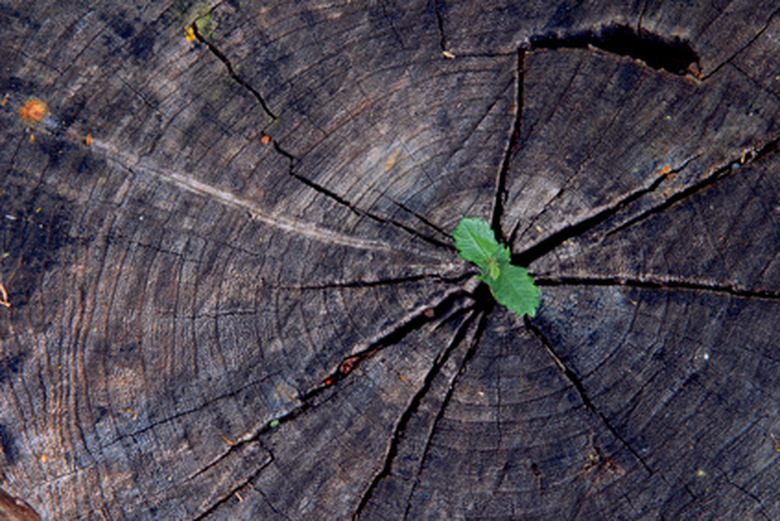How To Identify Trees By Bark
While identifying trees by their bark, the outer layer that protects the tree, is not an exact science, it can be a fun way to put your interest in and passion for nature into practice. Some types of trees have very distinctive barks, while others can be a little more challenging to identify. You can start with the trees in your backyard and then move on to local nature preserves or tree-lined boulevards.
Step 1
Feel the bark with your fingertips. If the bark is smooth, it is likely to be a beech, red maple or cherry tree. Oaks and sugar maple trees both have rough bark. If the bark is peeling, it might be a birch or hickory tree.
- While identifying trees by their bark, the outer layer that protects the tree, is not an exact science, it can be a fun way to put your interest in and passion for nature into practice.
- If the bark is peeling, it might be a birch or hickory tree.
Step 2
Notice the color of the tree bark, as well. Beech trees have a light gray bark, and cherry trees have a red-brown bark. Black walnut trees have very dark bark, while birch trees have white or silvery bark.
Step 3
Look for distinguishing characteristics. The honeylocust tree, for instance, is the only tree in North America with large thorns on the bark that look like spines and can grow as long as three inches. In addition, the Hercules-club tree grows cone-like spines on its bark. Sugar maples often have white lichen on their bark, and the black walnut tree has unusual dark and furrowed bark. Finally, the ridges on a green ash tree's bark will create diamond shapes.
- Notice the color of the tree bark, as well.
- Sugar maples often have white lichen on their bark, and the black walnut tree has unusual dark and furrowed bark.
Step 4
Use your nose! Some tree barks actually have distinguishing scents. Pine trees will often smell like turpentine, yellow birch smells like wintergreen, and sassafras trees give off a scent of cinnamon and spice.
Step 5
Bring a field guide along as you examine trees so that you can compare examples in the book to the tree bark you are viewing. Make your best guess before you open the book to look for the answer.
